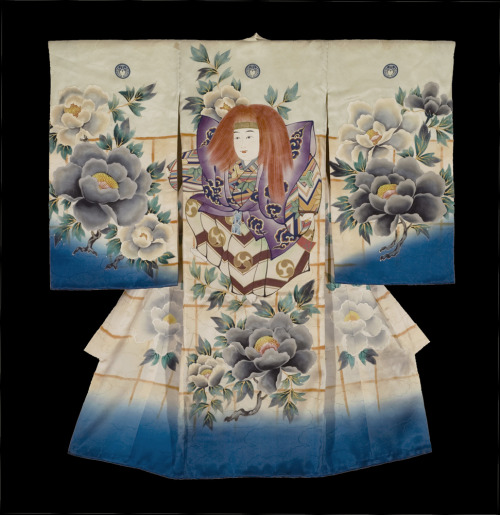Boys Miyamairi Kimono. Early Showa period (1927-1940), Japan. The Kimono Gallery. A plain silk boy&a
Boys Miyamairi Kimono. Early Showa period (1927-1940), Japan. The Kimono Gallery. A plain silk boy’s miyamairi kimono used during a Shinto shrine coming-of-age ceremony, featuring yuzen-dyeing and painting, with gold foil highlights. The main kimono is silk, while the lining is synthetic. The theme on this ceremonial kimono is from the Kabuki classic “Renjishi”, a dance based on the folk tale about a white-maned father shishi (mythological lionlike animal) and his red-maned male cub (the main subject on this kimono). There are blooming peonies everywhere. These spirits live at the foot of a holy Buddhist mountain. To foster courage and strength the parent kicks its young over the edge of the ravine and must wait anxiously to see if the cub can climb back up again. With great struggle, the cub successfully does make it back, and the two shishi wave their manes. The rite of passage has been completed and successful. This story is suitable for a boys coming-of-age garment such as this example. as patents would want their son to have strength and courage in life. Peony flowers are painted on this example according to the first line of the “Renjishi” story. From ancient the shishi and the peony flower are considered to make a perfect pair due to the belief that both are, respectively, the king of the beasts and of all flowers. The Renjishi story is a rare theme on such miyamairi ceremonial kimonos. -- source link
Tumblr Blog : thekimonogallery.tumblr.com
#antique kimono#miyamairi#showa period#shinto#renjishi#kabuki

